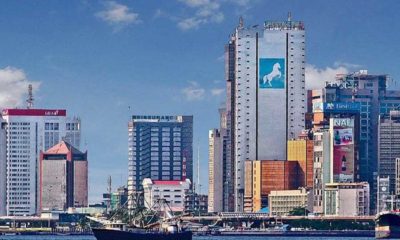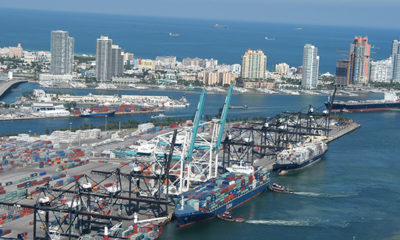- Nigerian Ports Record Mixed Performance as Vessel Traffic Decline 2.3% in Q1
Despite efforts by the Nigerian Ports Authority (NPA) to ensure the nation’s ports run efficiently, Nigerian ports recorded mixed fortunes in the first quarter (Q1) of 2018.
Performance report released by the NPA during the Nigerian Port Consultative Council (PCC) quarterly meeting held in Lagos revealed that the number of vessels which called at the ports during the period shrunk by 2.3 per cent.
However, there was an improvement in the turn-around time of vessels. This increase, according to the report, was because of concerted efforts of the management of NPA to improvement on port infrastructure and implementation of federal government’s Executive Order on Ease of Doing Business.
Analysis of the numbers showed that vessel traffic slumped from 1,008 vessels in the fourth quarter of 2017 to 985 vessels during the period under review, representing a decline of 2.3 per cent.
Gross tonnage of ship stood at 31,693,650 as against 32,598,477 recorded in the fourth quarter of 2017, representing a decline of 2.8 per cent.
In the same vein, container traffic in the Q1 of 2018 dropped. Further analysis of the statistics showed that within the period under review, container traffic stood at 387,016 Total Equivalent Unit (TEUs), indicating a decrease of 7.1 per cent from 416,806 TEUs handled by the same ports in the fourth quarter of 2017.
Also, vehicle traffic within the period under review dropped as a total of 37, 584 vehicles were handled by NPA within the period under review, representing a decrease of 13.2 per cent from 43,338 units received in the previous quarter.
Conversely, the ports recorded an impressive cargo throughput, recording 18,729,889 metric tons of goods in Q1 as against the 17,250,334 metric tons of cargo the seaports received in the fourth quarter of 2017, indicating an increase of 8.6 per cent.
The inward traffic stood at 10,617,318 metric tons, representing 56.7 per cent of cargo throughput at the ports in the Q1 of 2018 while the outward cargo traffic was said to be 8,112,671 metric tons representing 46.3 per cent of the total cargo traffic.
However, the turn-around time of vessels stood at 3.8 days when compared with 4.1 days in fourth quarter of 2017 while berth occupancy rate was 32.8 per cent as against 33.8 per cent on fourth quarter 2017.
The Q1 2018 witnessed a significant growth in cargo traffic when compared with fourth quarter of 2017, however, there was a decrease of 2.3 per cent in the number of ships that call to the ports but the corresponding cargo traffic increased by 2.3 per cent due to increase in export cargoes especially LNG shipment and agricultural products.
Meanwhile, stakeholders said the decline in the port performance may not be unconnected to the poor port access roads, security challenges and some government’s policies which are not considered friendly to boost vessels traffic.
The NPA had in a bid to ensure efficiency at the port axed the Standard Organisation of Nigeria (SON) and others who were affected in the executive order from the ports across the country.
The Managing Director of the NPA, Ms. Hadiza Bala-Usman gave the directive at a stakeholders’ meeting comprising the Nigerian Customs Service (NCS), operators and major stakeholders in the port.
She listed the NPA as the landlord, the Nigerian Customs Service (NCS), Nigerian Maritime Administration and Safety Agency (NIMASA), Department of State Services (DSS), Nigerian Police, Nigerian Immigration Service (NIS) and the Port Health Authority (PHA) as the only agencies approved to operate in the ports.
“These are the seven agencies that are mandated and have approval to operate in the port, any agency that is operating in the port outside of these agencies are not required to and they should be aware that they need to vacate whatever location they are currently having within the port because the current approval and provision provides that they are not to operate in the port,” she said.

 News3 weeks ago
News3 weeks ago
 Business3 weeks ago
Business3 weeks ago
 Technology3 weeks ago
Technology3 weeks ago
 Investment3 weeks ago
Investment3 weeks ago
 Banking Sector3 weeks ago
Banking Sector3 weeks ago
 Banking Sector3 weeks ago
Banking Sector3 weeks ago
 Appointments3 weeks ago
Appointments3 weeks ago
 Investment3 weeks ago
Investment3 weeks ago





























